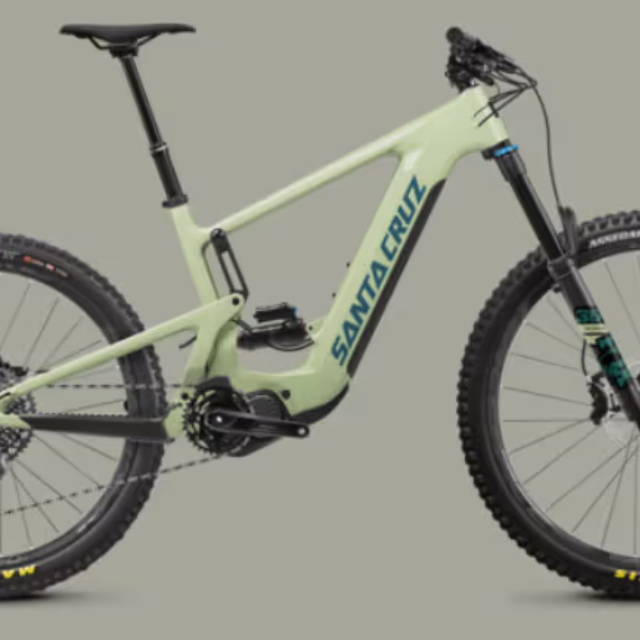Electric bikes are motorized bicycles that offer pedal assistance. Riders can toggle through pedal assist levels for the desired amount of boost or use the throttle if there is one. E-Bikes fall into three classes depending on their top speed and type of assistance.
Explained: The Role of Suspension Systems in E-Bikes
Written by: Rémy Rossi | March 30, 2025 | Time to read 5 min

More about the Author: Remy Rossi
Rémy Rossi is a bike writer, mechanic, and educator who got his start in community-based bike shops and co-ops. With a decade in the industry, he still wrenches on bikes when he can and plays bike polo on a fixie.

👋 Interested about Upway?
Purpose of suspension on bikes

- Control: It’s difficult to maintain a good grip on the handlebars and a stable riding position when bumping and bouncing all around the trail. Suspension isolates the rider from big shocks and vibrations that can cause the rider to lose control.
- Comfort: Shock absorption reduces the vibrations that travel up through the bike to the rider’s body, increasing comfort and reducing fatigue and the possibility of injury.
- Durability: The suspension system also reduces the forces that travel through the bike’s parts, limiting damage and wear on the bicycle caused by rough trails and big impacts.
- Traction: Suspension systems compress and extend to keep the wheels in contact with the riding surface, increasing traction and grip.
Parts of bicycle suspension systems

Spring: This is the device that absorbs the majority of the energy of an impact. There are coil springs and air springs— both systems have stored energy in their neutral state and “spring back” to their position after compressing during an impact. You may recognize the large coil springs on some full suspension mountain bikes. Air springs are a common element on other rear shocks and many front suspension forks.
Dampers: These important internal parts help the spring manage energy and control how fast the suspension can compress and extend. Think of dampers as the fine-tune settings. The system typically involves the damper body, hydraulic fluid, and a piston.
For an even more in-depth look into bicycle suspension, check out SRAM and RockShox’s approachable suspension theory guide!
What is suspension travel?
Suspension travel refers to the total distance that the front or rear wheel moves up and down when going over bumps. It’s this distance that allows the bike and rider to stay in a stable, controlled position as the wheels adapt to the uneven riding surface. Travel is measured in millimeters.

🤝 Get an even better discount when you trade in your electric bike now!
Click here for a price estimation
Full suspension or hardtail e-Bikes?

There are many reasons to choose a full-suspension e-Bike, including better traction, comfort, and control on challenging terrain with big bumps and jumps. All trail, enduro, and downhill electric mountain bike models are equipped with full suspension. But that extra shock absorption comes with a higher price tag and weight penalty, though the electric motor compensates for the weight gain on the climbs.
Hardtail bikes, on the other hand, are versatile machines that can take on rugged terrain and stay efficient on smoother routes. They are lighter, less expensive, and feel more nimble on fast-rolling surfaces like cross-country circuits. There’s no rear shock to worry about when it comes to maintenance or climbing efficiency.
But electric mountain bikes aren’t the only bikes with suspension. Many hybrid e-Bikes have a front suspension fork (a rare few have full suspension) to absorb road buzz and deliver that extra bit of comfort on commutes or recreational rides. These forks have less travel than an electric off road bike but provide the right amount of cushion for smoother rides in the city and your local bike paths.
Frequently Asked Questions
What is an electrical bike?
Key Takeaways
- Suspension Enhances Control, Comfort, and Durability: Suspension systems absorb shocks and vibrations, helping riders maintain stability, reducing fatigue, and protecting the bike from excessive wear, especially on rough terrain.
- Different Suspension Types for Different Rides: Full-suspension e-Bikes provide better traction and comfort for rugged trails, while hardtail e-Bikes are lighter and better suited for smoother trails.
- Suspension Travel Affects Performance: The amount of suspension travel determines how well an e-Bike adapts to bumps and impacts, with more travel suited for aggressive off-road riding and less travel ideal for urban and recreational use.


